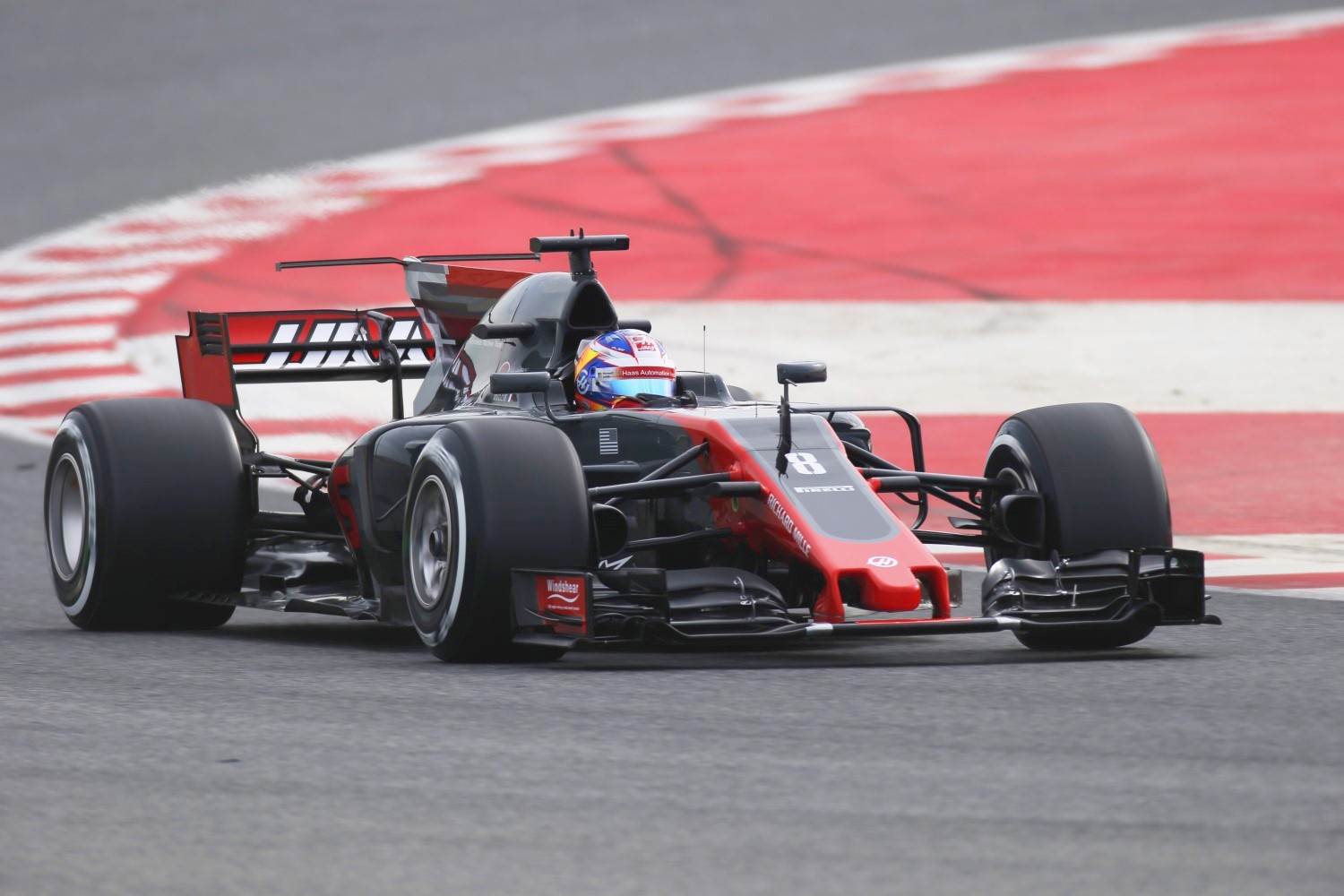Haas F1 team ready for Sophomore year
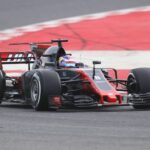 |
| Romain Grosjean tests the 2017 Haas |
KANNAPOLIS, North Carolina — Last year's Australian Grand Prix saw the debut of Haas F1 Team in the FIA Formula One World Championship. The first American Formula One team in 30 years made quite the impression, with driver Romain Grosjean finishing sixth in the season-opening race. It was the best debut for any Formula One team since 2002 when Mika Salo finished sixth for Toyota, also at the Australian Grand Prix.
Grosjean took the eight points earned that day on the 5.303-kilometer (3.295-mile), 16-turn Albert Park Circuit in Melbourne and went on to score 21 more points throughout the year to place Haas F1 Team eighth in the constructor standings.
Now the American squad returns to Melbourne for the 33rd Australian Grand Prix March 26 to begin its sophomore season with a new set of circumstances.
After building its first car under one set of FIA guidelines in 2016, a new set of technical regulations in 2017 means another new car has been built from scratch. The Haas VF-17 features an advanced aerodynamic package designed to create a higher level of downforce. A wider front wing, larger barge boards, a lower and wider rear wing and a diffuser that expands 50 millimeters (two inches) in height and width comprise the changes, along with wider tires from Pirelli, by 60 millimeters (2.4 inches) in the front and 80 millimeters (3.1 inches) in the rear, a 25-percent increase to bring the front tires to 305 millimeters (12 inches) and the rear tires to 405 millimeters (15.9 inches).
[adinserter name="GOOGLE AD"]After being the new kid on the block in 2016, the new rules bring at least shared newness among all teams in 2017.
In addition to its new car, there's also a new driver for Haas F1 Team. Kevin Magnussen joins Grosjean to form a formidable 1-2 punch that team owner Gene Haas thinks can advance his organization another position in the construction standings.
"It'll be just as challenging as it was last year, but I think with the knowledge we have, we should actually perform a little bit better this year," Haas said. "I think by the end of last season we silenced the critics and, now, most people see us as a serious competitor."
Magnussen and Haas F1 Team already have one thing common – strong debuts in Melbourne.
Magnussen made his first career Formula One start in the 2014 Australian Grand Prix. It was an incredibly stout performance as he started fourth and finished second. The 18 points Magnussen earned for that runner-up effort put him in the Formula One record book for the most points scored in a debut. And unless a new driver wins in his first race, it's a feat that won't be beat. (Next best is Felipe Nasr, who scored 10 points in his debut via a fifth-place finish in the 2015 Australian Grand Prix.)
With his second-place finish, Magnussen joined an exclusive group of drivers who claimed a podium in their Formula One debut. Jacques Villeneuve did it in 1996 (second) and Lewis Hamilton did it in 2007 (third). Both accomplished the feat in the Australian Grand Prix. Villeneuve went on to win the Formula One title in 1997 and Hamilton is a three-time champion (2008, 2014 and 2015).
With podium-earning drivers in Magnussen and Grosjean – both of whom claim career-best second-place finishes – Haas F1 Team is poised for improvement.
Romain Grosjean
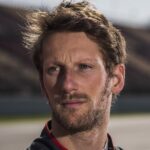 |
| Romain Grosjean |
Haas F1 Team tested at Circuit de Barcelona – Catalunya for eight days over a 12-day span. How did it go and how did it prepare you for Australia?
"It went pretty well. We did a lot of laps, which is good. I think we ran a good pace. Some days were better than others, as normal in testing. All in all, I was very happy with the reliability of the car, and also the pace. We just need to keep the pace consistent, not like in testing, where it was on and off a little bit."
Obviously, a lot was learned at Barcelona, but there wasn't much time between when the cars arrived back at the factory before they had to leave again for Australia. What did you do to make the most of that time?
"You just bring the cars back to the logistics base in the UK where you prepare them as best as you can. You re-paint them so they're like new cars, and the engineers sit down and go through a lot of data to try to find the right setups for when we go to Australia."
How have the new car regulations and increased lap times changed the dynamic of the car's setup?
"The car setup, you deal with it as you go along and with what the car is doing. There is no specific change to find a setup than it was before. It's a different car and you need to go through the data, learn from it, and adjust the setup accordingly."
Tires are 25 percent wider this year, but have you noticed any change in the characteristics of the various tire compounds or have they remained consistent from last year?
"No, they seem to behave differently, but it's difficult to say at the first test in Barcelona as it's cooler than normal. We tested some tires there, some compounds, which will never see Barcelona again in a race. So, we still need to find out a lot about tires, but I think it's still the key to performing or not this year, just like it was last year. The little details we'll find out when we get to the racetrack. We can compare last year to this year on the tires."
With lap times coming down by roughly five seconds, where is the time being found? Corner entry? Corner exit? Both?
"Both. Corner entry and corner exit. The cars, by being wider, have more mechanical grip and more aero, and the cornering speeds are so much higher."
It's been said that actual turns on the track aren't necessarily considered turns anymore by some engineers if a driver takes them flat out. Is this accurate?
"It's accurate that you take them flat out, but they're still a turn because otherwise you could go even faster. Turn three in Barcelona was flat out for most of the time. Again, I think it's good for the sport to have these lap times decrease."
Have the new car regulations changed how engineers view certain portions of the track, particularly at the Albert Park Circuit?
"You have to adapt all that you know to the new tires and the new aero specifications, but you just attack race weekends as you did before."
How has Kevin Magnussen assimilated with the team and the Haas VF-17?
"He fits in very well. The team is very happy with him and I think I can say the same from his side. He seems to be gelling very well with his engineers and wanting to contribute so we can have a good season."
With Haas F1 Team's second season-opener now upon us, how has the preparation for this year differed from last year?
"This year I could see that we were better prepared, which is natural because we've already done one year. We know a lot more, which just comes from experience. We've got one year of experience. All our partners, Ferrari and Dallara, they were better prepared, again, because they had one year of experience. All in all, it went a lot smoother."
Last year, Haas F1 Team was starting from scratch, and that had its own unique challenges. To get ready for this year, you had to race your 2016 car while simultaneously developing your 2017 car. That's what every Formula One team does, but this was Haas F1 Team's first time doing so, and it's why many pundits say your second season will be harder than your first season. What do you think? Is that accurate?
"I wouldn't say that normally the second season is harder than the first one, but a lot of people predicted that we would have big issues. But they predicted as well before the first year that we would have big issues, and we didn't have them. The preparation was a lot better for us this year than last year, so I hope also the performance of the car is better. Anyway, testing went very well, and I hope we've got a little bit of luck, as well, in the first race, like we had last year, and can take points home. We know the second year is harder and so we tried to prepare as best as we could for it. Let's wait a few races and then see what we've achieved."
Speed is obviously the name of the game in racing. But with new cars built under new regulations, how important is reliability, particularly at the start of the season?
"Very important because as we saw in the test, a lot of teams can have issues. We were reliable, very reliable for the first test and, knock on wood, we stay like that in the first race, just because there is a chance to score points if others have problems."
What would you like to achieve in Australia?
"Points!"
Kevin Magnussen
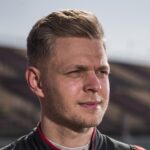 |
| Kevin Magnussen |
Haas F1 Team tested at Barcelona for eight days over a 12-day span. How did it go and how did it prepare you for Australia?
"It went well. You could really see a difference from last year when we had our first winter test. The team was much more ready, everyone knew what they had to do. We had a few small problems, as you would expect, but generally everything was sorted very quickly. We got some mileage that was very good. Everyone was back to work discovering the new car. It went well. I don't think you're ever fully prepared to go to Australia with only four days driving the new car. It's the same thing for everyone, so we have to make the most of it."
How would you describe the VF-17?
"It's a pretty sexy car. It's got a lot of potential, which we haven't unlocked yet. It's a good baseline, though, and so far it feels pretty good to drive. There are a few things I'd like to improve and make better for the first few races, but I think it's a car that should give us some good races."
Much has been made about how physical these new cars are to drive. After testing in Barcelona, how did your body feel?
"I didn't feel too bad. But let's put it this way, if I'd been in the same condition as I was last year, I would have been destroyed. We pushed really hard in our training. We may actually have overdone it. It's not as bad as we thought it would be. The cars are going to be challenging and some of the races this year are going to be epic, especially where it's warm with a high-speed track, it'll be very hard on the body. I like the challenge and I like to think that we can always get more prepared and better trained. It felt good as we did the proper training. The cars are much harder to drive than last year."
Was there any particular area of your body where you felt the effects of increased g-forces?
"No. I think the whole body, in the first week of testing, was getting back used to it. The neck is painful, and the back, you're getting used to the positioning of your legs. In the second week everything feels much more normal. No real big aspects from testing, but as I said, we had pushed the training hard and that'll be the case again before Australia, before China and the early part of the season. We'll build more muscle and make sure all the areas are covered."
Tires are 25 percent wider this year, but have you noticed any change in the characteristics of the various tire compounds or have they remained consistent from last year?
"I think Pirelli did a good job in making the tires more forgiving and less sensitive to overheating. Hopefully that will allow us to follow another car closely, slide a little bit and not overheat and lose grip. Let's see if it is as we think it will be on the track. If so, we can push the car much harder and have more fun."
With lap times coming down by roughly five seconds, where is the time being found? Corner entry? Corner exit? Both?
"Both, and mid-corner I'd say as well. The high-speed is much faster and low-speed we brake later and we carry more speed. Basically everywhere except from a straight line where we're losing time."
The Ferrari 062 appeared fast and reliable in testing. How did it feel compared to last year's engine?
"It felt pretty good. Ferrari has made a good step. The drivability was very good. We haven't yet had qualifying maximum power, which you only get at the racetrack, but I've got a good feeling that this engine is going to be nicely pushing us on the straight."
Speed is obviously the name of the game in racing. But with new cars built under new regulations, how important is reliability, particularly at the start of the season?
"Reliability early in the season is always tricky. All the cars have more stress, more g-forces, and so on. All the designers have been working hard trying to understand what the requirements are and that's why we go winter testing, as well. We try to see where there are areas we can make things better. Clearly in the early season, there's always a chance that reliability is not perfect, but you can gain from that."
Haas F1 Team's debut at last year's Australian Grand Prix was pretty remarkable, with your sixth-place finish the best debut for any Formula One team since 2002 when Mika Salo finished sixth for Toyota, also at the Australian Grand Prix. Can you describe that moment and what it meant for you and the team?
"It meant a lot. It was a result we were clearly not expecting after a tough qualifying. We had a brilliant race. When we took the checkered flag, for us, it was clearly as good as winning the race. It was fortunate, but perfect."
Did that result validate your move from Renault to Haas F1 Team?
"I didn't need that to validate the move. I knew the day I signed that it was the right choice for my career. Of course, good results are always a good thing, but I was already convinced that I'd made the right choice."
How important is it to start the year with some point-paying finishes, as it can give the team some cushion for the rest of the season when some of the bigger teams further develop their cars?
"I think this year it's actually going to be the opposite. This year, if you had to choose, I think you'd want to start slow and finish hard, and not the opposite. This is because in 2018 the cars are going to be very similar to 2017, and therefore if you're finishing on a high it means you've understood the regulations and everything's going well. Your next car will be on that trend. We really want to keep the development going and push through the year, improving race after race."
What are your goals for the season-opening race in Australia?
"I don't really set goals. Let's see how it goes. We'll do our best and, hopefully, we'll remember it as well as Australia 2016."
What is your favorite part of the Albert Park Circuit?
"I love the backstraight with the high-speed corner – turns 10 and 11."
Explain a lap around the Albert Park Circuit.
"Going down the main straight and heading into turn one, you always get the sun in your eyes. It's quite a nice corner, right inside corner, fourth gear with a little bit of inside curb then outside curb. Turn three is a bit of a tricky corner. You have to be careful on exit and well placed for the next left, which is turn four. Turn five, if you've got a good car, it's flat out. Turn seven is then a right inside corner in third gear. It's quite a good corner as well, with a bit of a tricky curb on exit. Turn nine requires big braking. Total application is very important because you've got the backstraight and you're very close to the wall on exit.
"Then you have my favorite corners between (turns) 11 and 12 and 13. It's high speed, sixth gear probably. It's a good feeling. Going into (turn) 14, you have lots of braking as you're carrying quite a bit of speed in there. (Turn) 15 needs just a bit of a lift off (the throttle), right inside corner, pretty cool to drive. You then need to be well positioned for the last braking point into the left-hand side, where it's quite tight. The last corner you want to stay flat out, but it's a bit of a tricky one with a bump in the middle.
"I enjoy Albert Park. It changes a lot during the weekend. It's not a permanent circuit, so the grip is changing a lot. The race start is quite late, but it's one of my favorite grand prix. It's not an easy track to get on with. It's very hard on fuel consumption as well. For the first race of the season, it's going to be interesting."
Albert Park Circuit
-
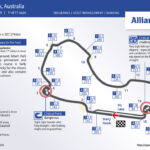
Albert Park Total number of race laps: 58
- Complete race distance: 307.574 kilometers (191.118 miles)
- Pit lane speed limit: 60 kph (37 mph)
- This 5.303-kilometer (3.295-mile), 16-turn Albert Park Circuit has hosted Formula One since 1996, with last year's Australian Grand Prix serving as the venue's 21st grand prix. However, this is the 33rd Australian Grand Prix, with the inaugural Formula One race taking place in 1985 on the Adelaide Street Circuit, which was won by Keke Rosberg, father of reigning Formula One champion Nico Rosberg.
- Michael Schumacher holds the race lap record at Albert Park Circuit (1:24.125), set in 2004 with Scuderia Ferrari.
- Sebastian Vettel holds the qualifying lap record at Albert Park Circuit (1:23.529), set in 2011 with Red Bull in Q3.
- The Albert Park Circuit comprises public roads encircling Albert Park Lake, a man-made body of water just south of Melbourne's central business district. The roads were rebuilt prior to Formula One's debut at the track in 1996, but because the surface only sees racecars about once a year, grip is hard to come by, especially in the initial practice sessions. It's a street circuit that some say behaves more like a natural road course.
- DYK? Albert Park hosted races in the 1950s on a 5.03-kilometer (3.125-mile) configuration of the current circuit. During this time, however, the race ran in an anti-clockwise direction, as opposed to the current clockwise direction of the track's layout.
- During the course of the Australian Grand Prix, lows will range from 12-14 degrees Celsius (53-57 degrees Fahrenheit) to highs of 22-24 degrees Celsius (71-76 degrees Fahrenheit). Relative humidity ranges from 40 percent (comfortable) to 91 percent (very humid), with a dew point varying from 6 degrees Celsius/43 degrees Fahrenheit (dry) to 14 degrees Celsius/57 degrees Fahrenheit (comfortable). The dew point is rarely below 2 degrees Celsius/36 degrees Fahrenheit (dry) or above 17 degrees Celsius/63 degrees Fahrenheit (mildly humid). Typical wind speeds vary from 3-27 kph/2-17 mph (light air to moderate breeze), rarely exceeding 43 kph/27 mph (strong breeze).
Tires
-
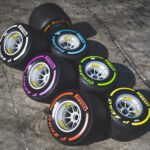
Pirelli tires Pirelli is bringing three tire compounds to Australia:
- P Zero Yellow soft – less grip, less wear (used for long-race stints)
- This is one of the most frequently used tires in Pirelli's range, as it strikes a balance between performance and durability, with the accent on performance. It is still geared toward speed rather than long distances, but it remains capable of providing teams with a competitive advantage at the beginning of the race where cars are carrying a full fuel load, and at the end of the race where the fuel load is much lighter and the race effectively becomes a sprint. It is a high working-range compound.
- P Zero Red supersoft – more grip, medium wear (used for shorter-race stints and for initial portion of qualifying)
- This is the second softest tire in Pirelli's range, and it is ideal for tight and twisting circuits, especially in cold weather, when maximum grip is needed. The supersofts warm up rapidly, which has made it a stalwart choice for qualifying. But with increased grip comes increased degradation. It is a low working-range compound.
- P Zero Purple ultrasoft – highest amount of grip, highest amount of wear (used for qualifying and select race situations)
- This is a newer tire in Pirelli's lineup, debuting at last year's Monaco Grand Prix and most recently used at the Abu Dhabi Grand Prix in late-November. It is the softest tire in Pirelli's range, with rapid warming and massive performance. It is best used on tight and twisting circuits that put a premium on mechanical grip. However, because it is so soft, it has a limited lifespan. It is a low working-range compound.
- Two of the three available compounds must be used during the race. Teams are able to decide when they want to run which compound, adding an element of strategy to the race. A driver can also use all three sets of Pirelli tires in the race, if they so desire. (If there are wet track conditions, the Cinturato Blue full wet tire and the Cinturato Green intermediate tire will be made available.)
- Pirelli provides each driver 13 sets of dry tires for the race weekend. And for the first five grands prix of 2017, Pirelli sets the allotments – two sets of the hardest tire available, four sets of the medium compound and seven sets of the softest tire. Come the sixth race of the year at Monaco, teams will be able to choose the specifications of 10 of its 13 sets from the three compounds Pirelli selected.
